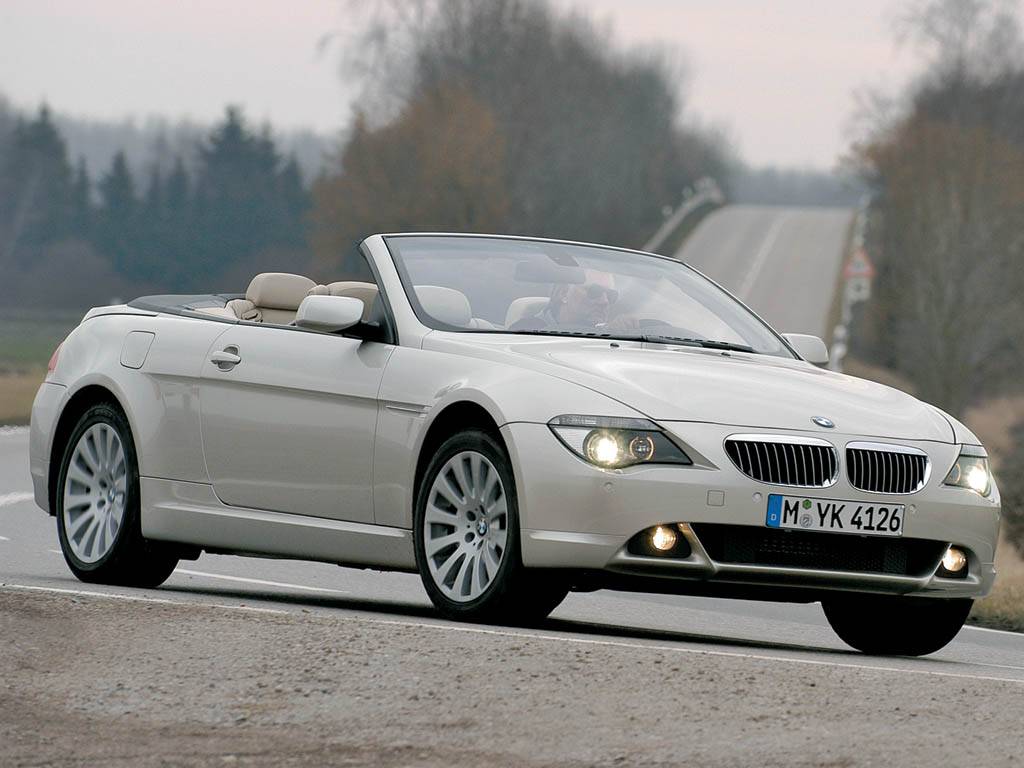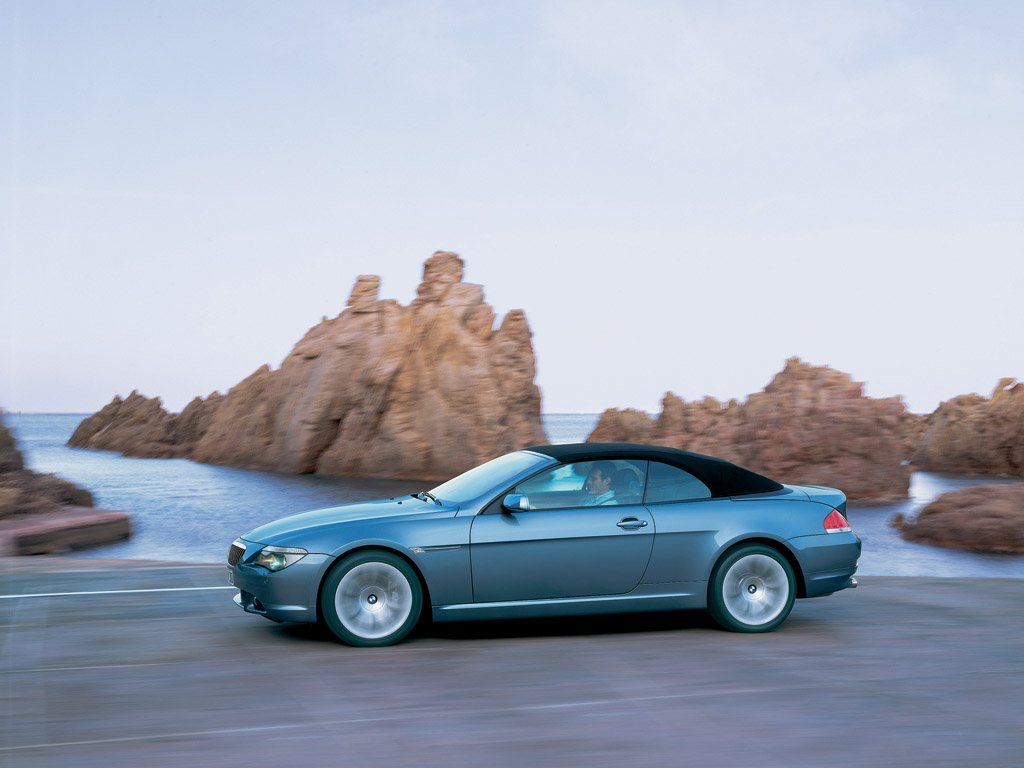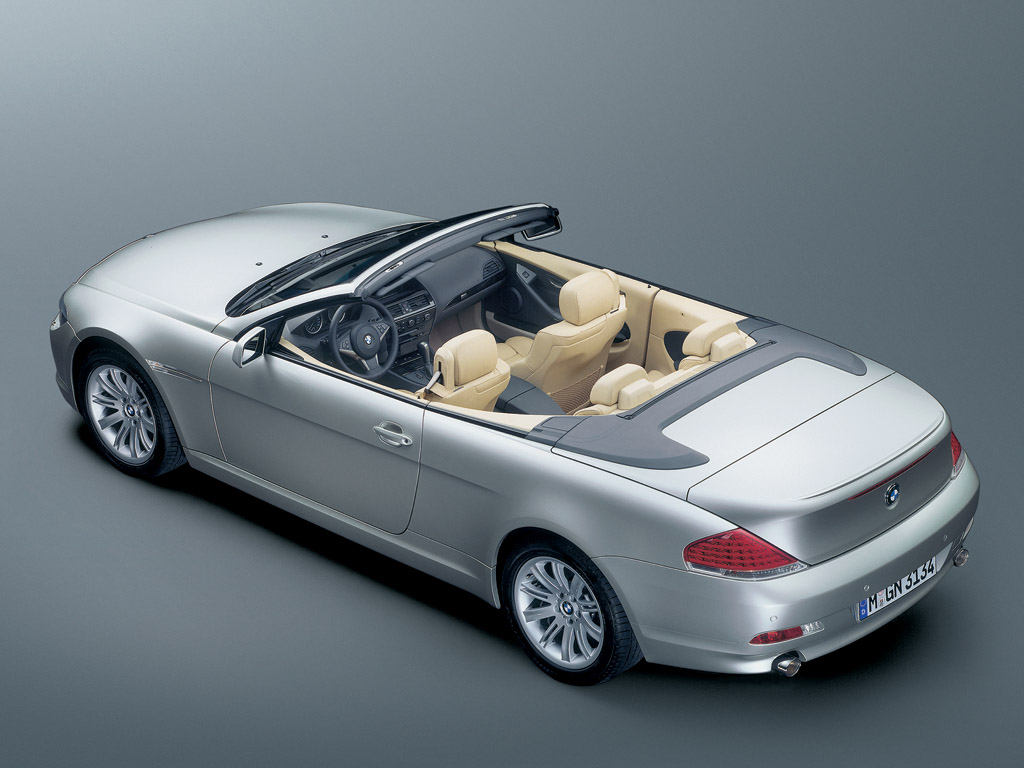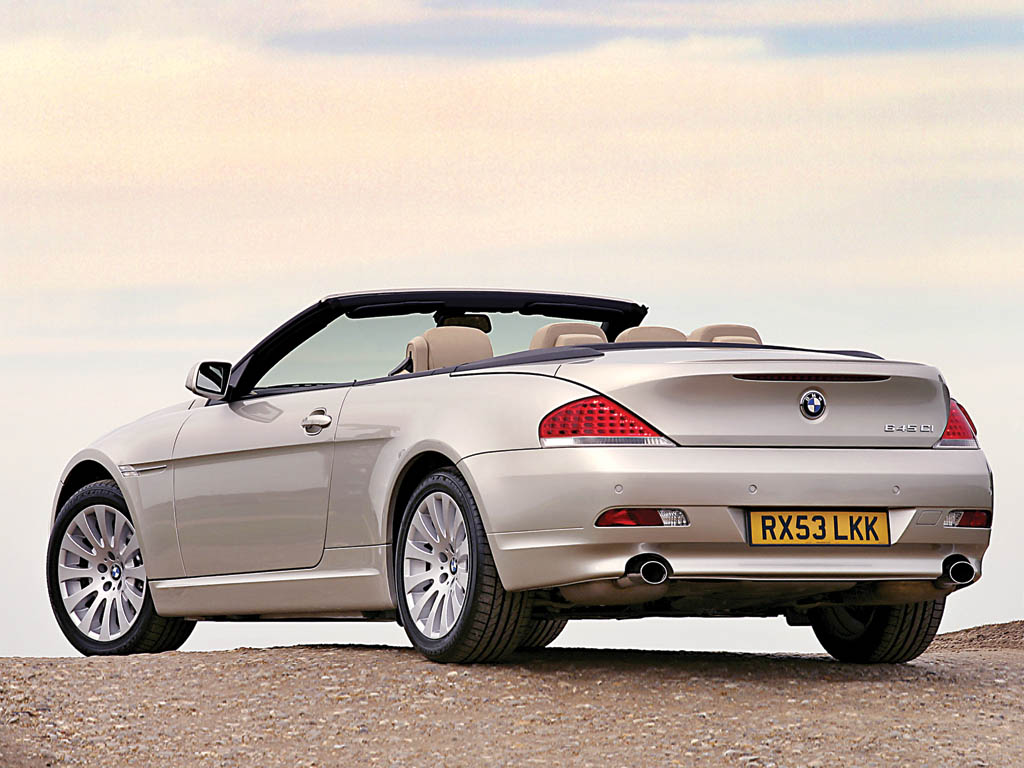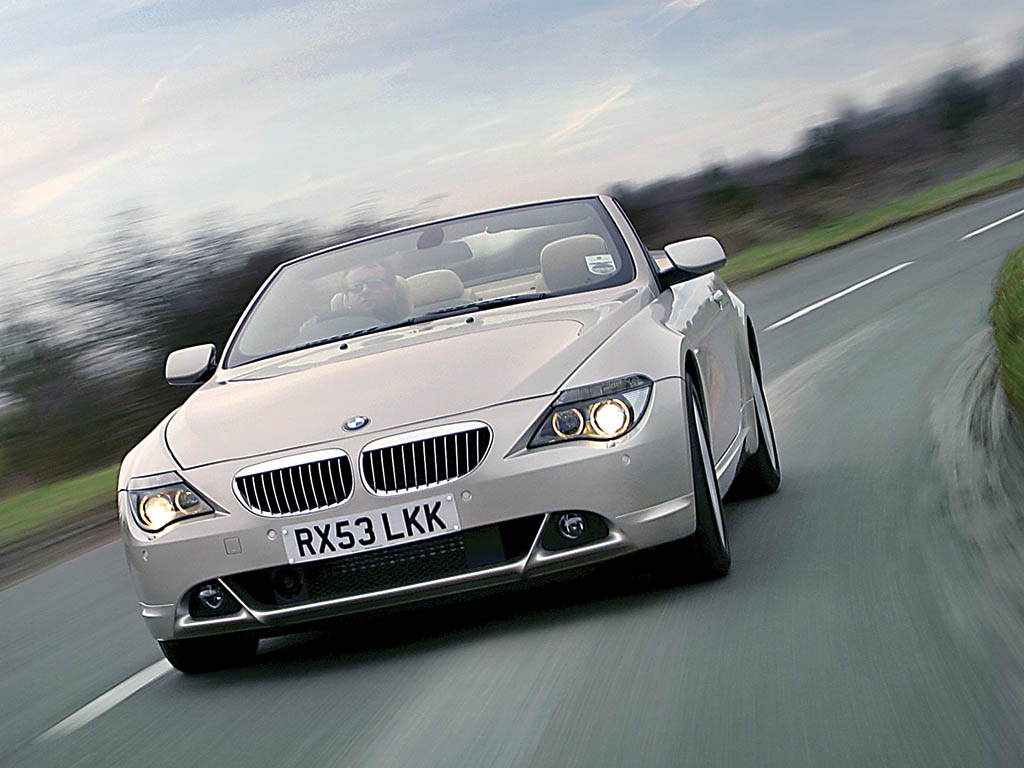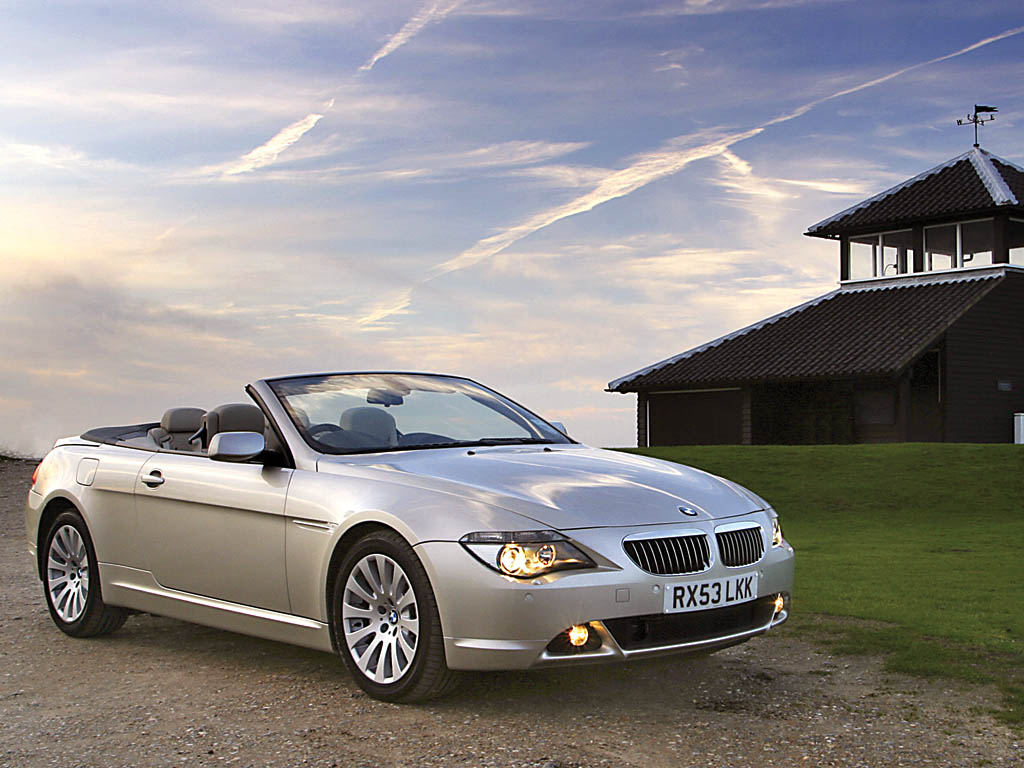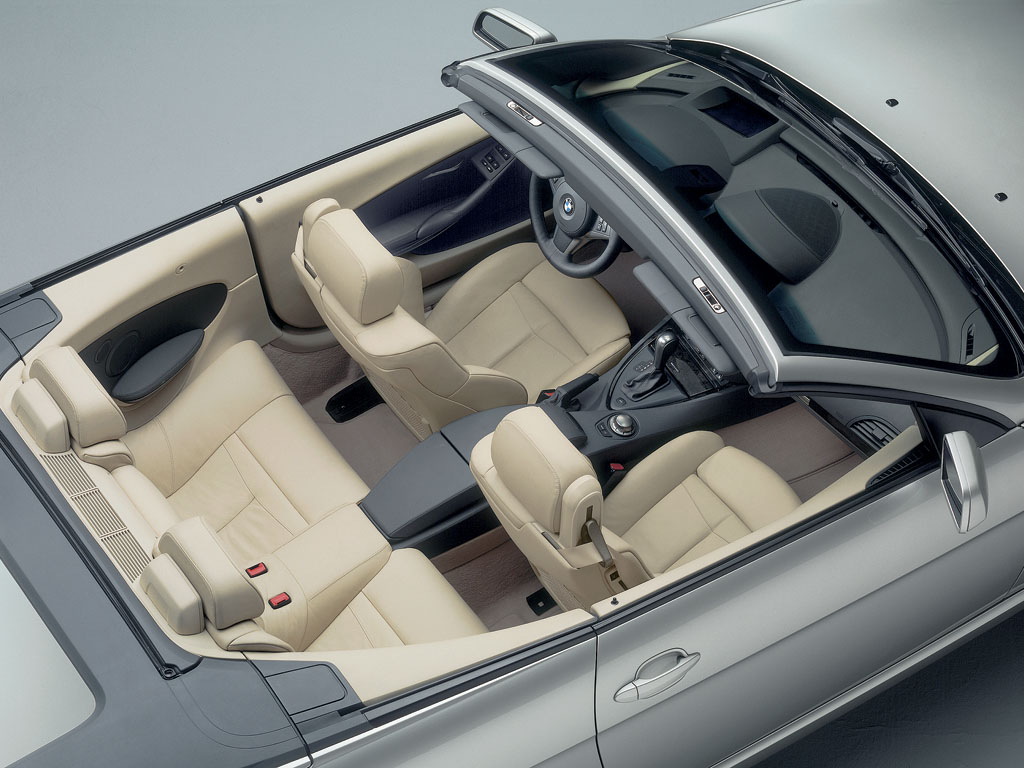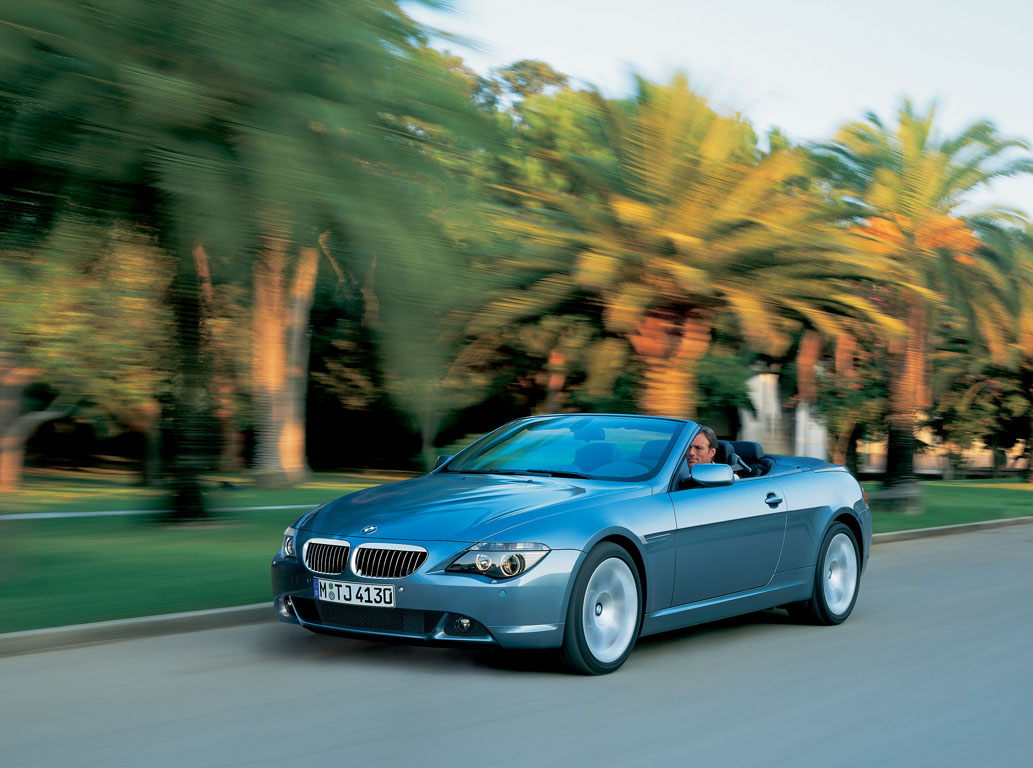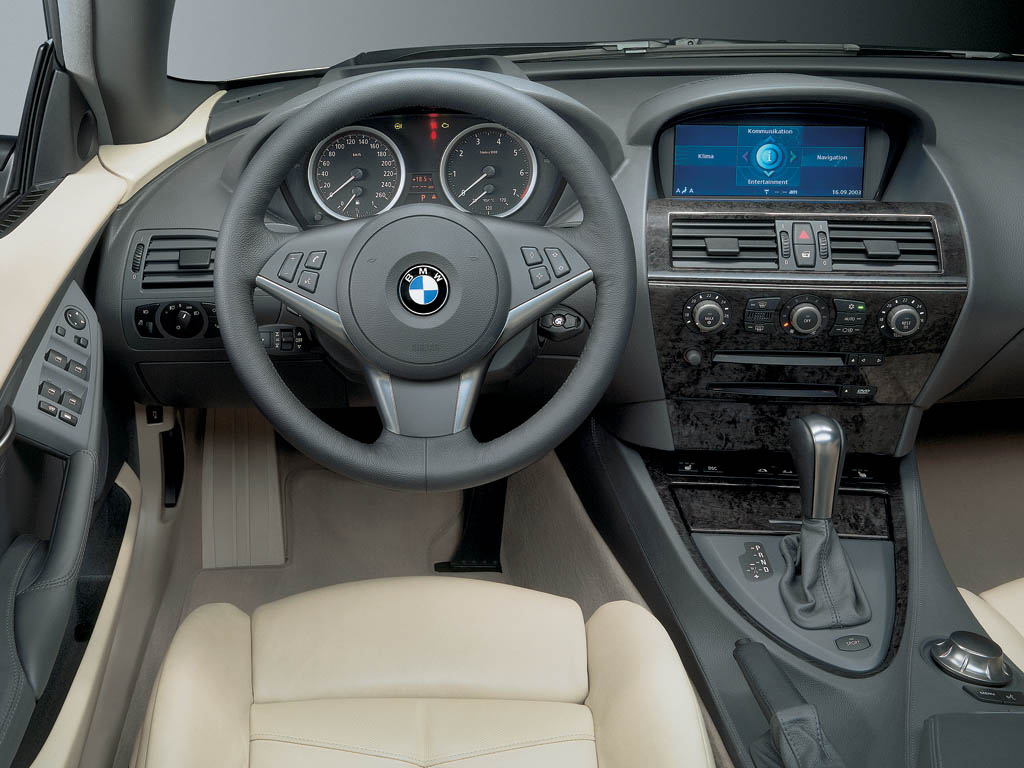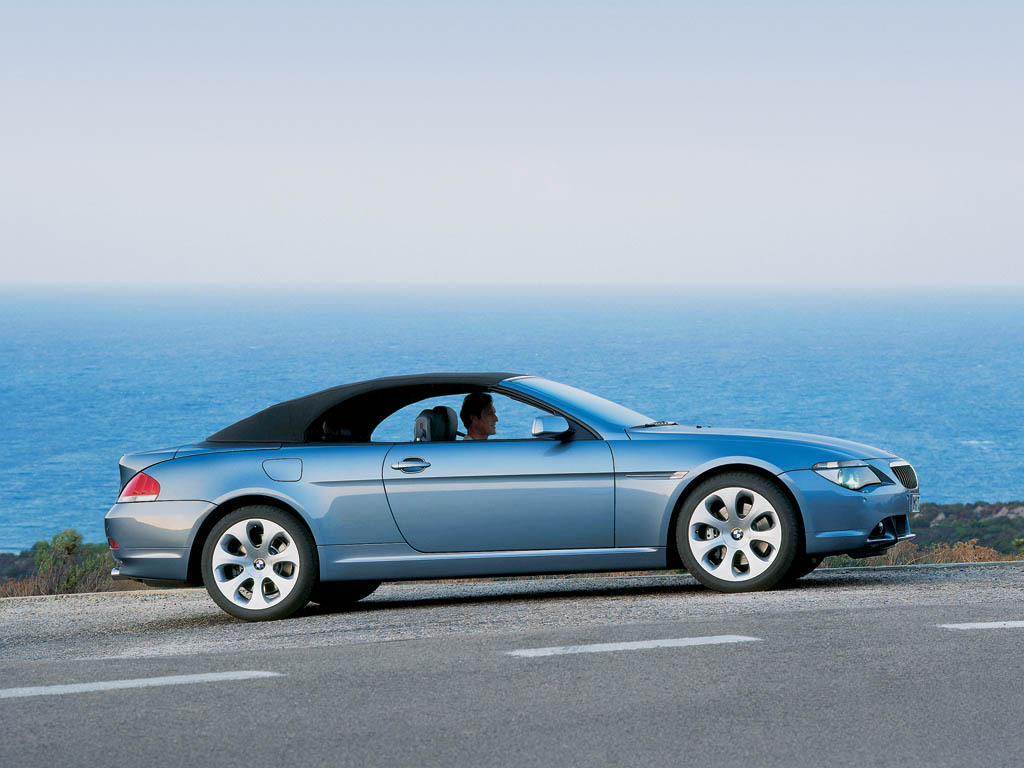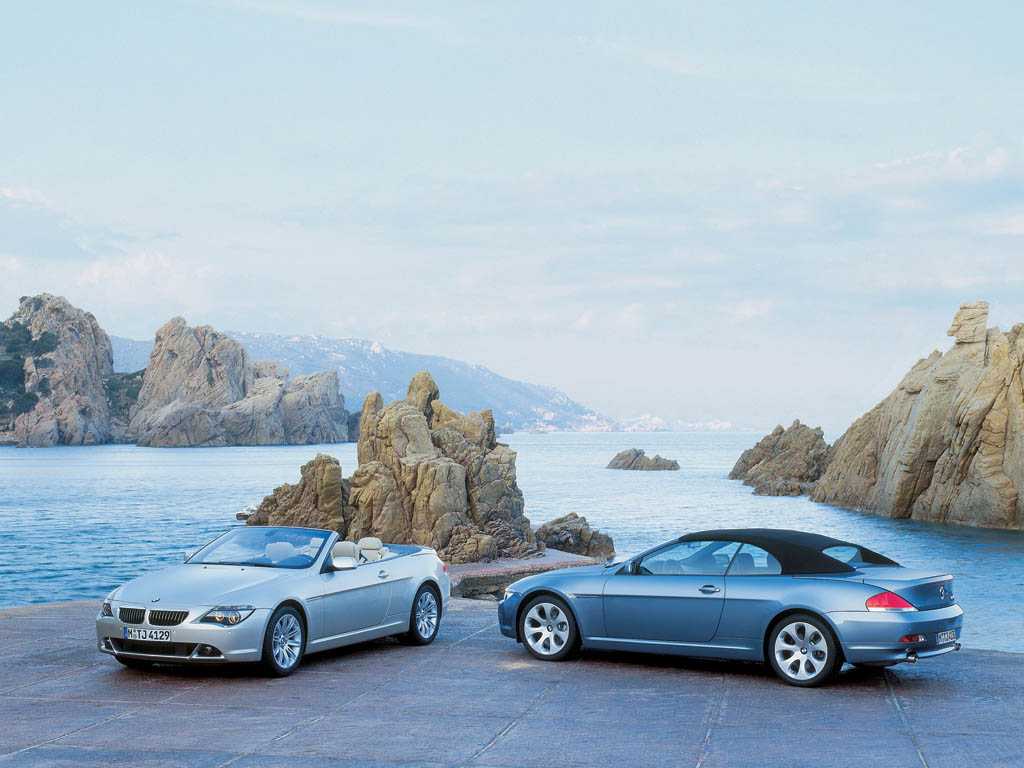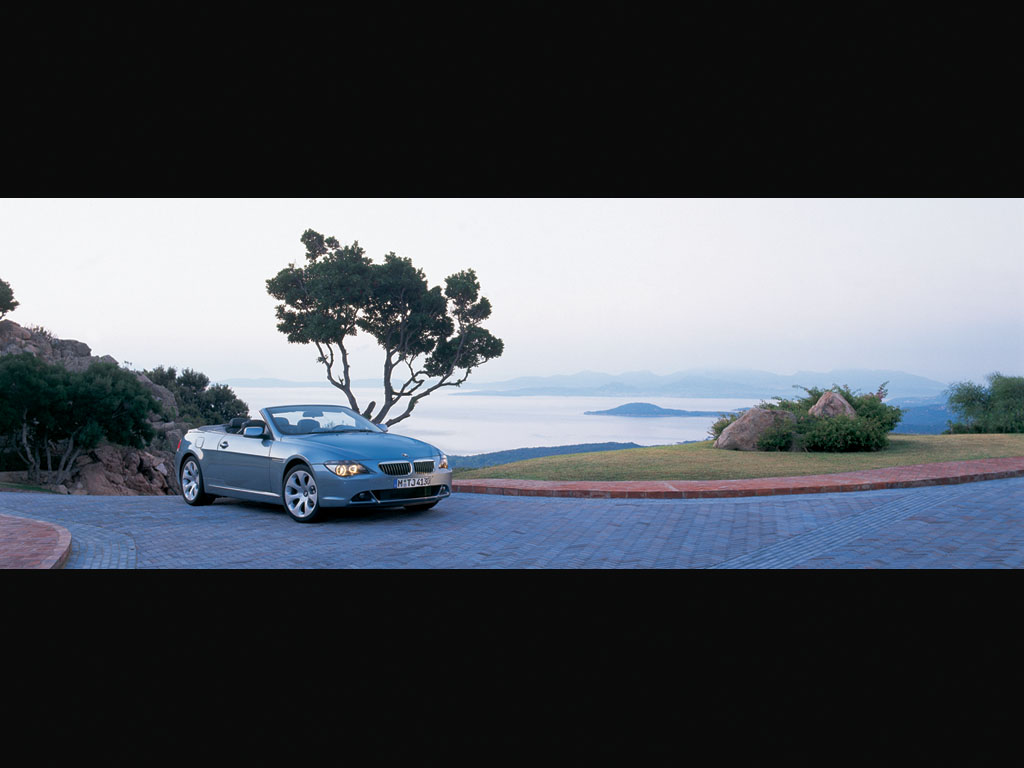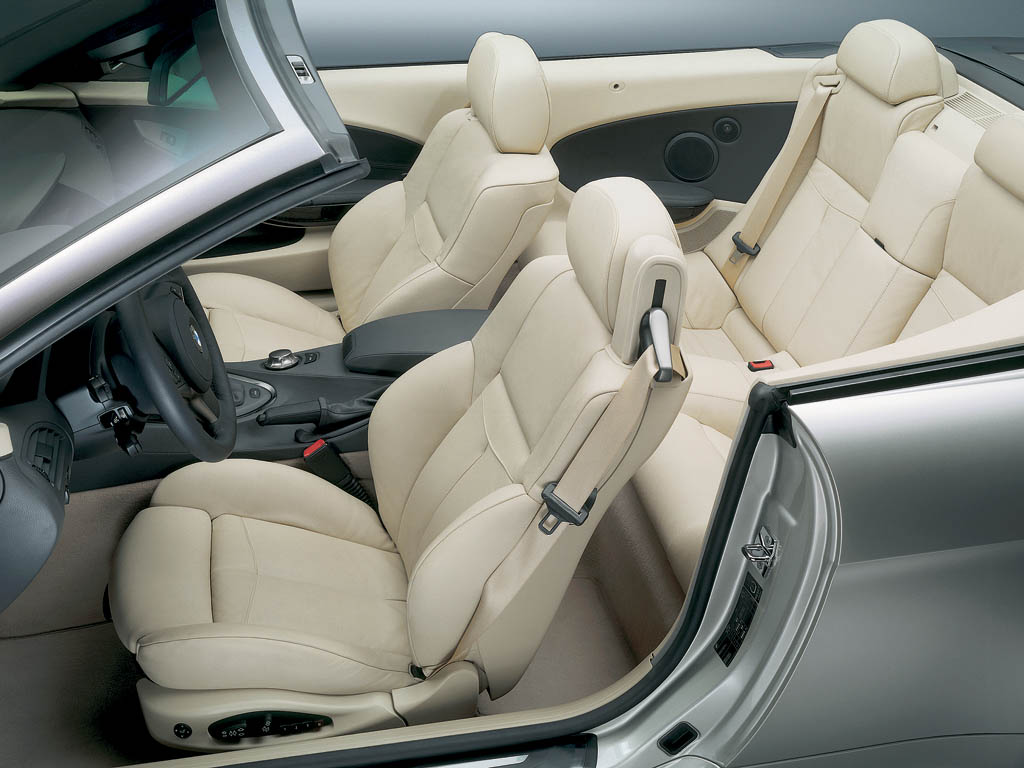2004 BMW 645Ci Convertible
The 645Ci Convertible joins BMW’s range as its first luxury performance cabriolet.. It combines a V8 engine, lightweight materials, six-speed transmission, four seat accommodation and a new roof concept . Key competitors include Jaguar’s XK8 Convertible, Porsche’s 911 Carrera 4 Cabrio, Maserati 4200 Spyder GT and the Mercedes’ SL500 or SL350
Design
The starting point for the 6 Series Convertible was to develop the car alongside the Coupe, rather than the more traditional, and compromising, route of taking an existing coupe, chopping off its roof and adding the requisite strengthening materials. In developing the 6 Series Convertible, BMW retained the Coupe’s silhouette.
Despite the fad for fancy folding metal roofs, BMW engineers preferred to advance the art of the folding soft-top. Such systems afford greater flexibility, more boot space and contribute to lightweight engineering. Its multi-layered folding roof is made of a rubberised cloth inner and outer with a polyurethane material called PUR sandwiched between. This results in virtually the same high standards of acoustics and thermal insulation as a folding hard-top, reducing wind noise by up to 3dB(A). However, the benefits of the new convertible roof do not end there.
The fin structure roof is BMW’s innovative solution to maintaining a coupe-like profile with a soft folding roof. The soft top fins double back, allowing the car to feature a comparatively small, independent, electrically-powered vertical rear window. This glass can be raised or lowered with the roof open or closed, either for extra ventilation or as an effective wind deflector.
The fully automatic roof opens both by remote control from the key and via a button at the base of the centre console. The complete process of opening or closing the roof takes around twenty seconds and, within this time, all windows are lowered or raised as required.
Drivetrain
At the heart if the 645 is the 4.4-litre V8, already seen in the revised BMW X5, 545i and 745i. The conflicting demands of performance and economy of this engine have been well met thanks to the adjustment of vital engine functions such as valve lift (VALVETRONIC), valve timing (Bi-VANOS) and the differentiated, fully variable intake manifold (DIVA).
In addition to the fully automated valve control and intake manifold systems, BMW’s advanced Dynamic Drive Control (DDC), or Sport mode, can be activated at the touch of a button. Among its myriad functions DDC monitors the car’s on-board power management and can switch off power-consuming items not currently needed. At the same time it re-prioritises energy as required to other power consuming systems, ultimately improving and indeed maximising, throttle response.
By activating DDC via the Sport button by the gearlever, the driver is able to sharpen the dynamic characteristics of the car with increased throttle response and weightier steering. The system also offers gear changes at higher revs in the Automatic or Drive function on the SMG.
Low weight offers improved safety, enhanced environmental compatibility and increased comfort. But keeping weight low on a convertible is a more exacting task than on a closed car where a fixed roof contributes significantly to torsional body stiffness. To overcome this, the 6 Series Convertible replaces conventional materials with lighter materials wherever possible.
Lightweight technology can be found in the Convertible’s body, which features a unique aluminium front end that is significantly lighter than a conventional front end constructed from steel. Additionally, the housings supporting the front struts are in pressure-cast aluminium alloy, while the doors, rollover safety system, the inner and outer skins of the bonnet, the brake disc callipers and carriers plus most suspension and axle parts are also made of aluminium.
Further weight saving comes from the front wings which are made from thermoplastic and the boot and roof compartment lids which are formed from SMC (sheet moulding compound). As a result, BMW becomes the first manufacturer in volume production to have a hybrid bodyshell of four different materials.
The 645Ci customer has a choice of three six-speed transmissions: a conventional manual, an automatic with STEPTRONIC manual selection, or the sequential paddle-shift, clutchless SMG system. Power in all cases is directed to standard fit 18 inch alloys (19 inch optional) rolling on Run-flat tyres with a tyre puncture warning system.
In Detail
| type | Series Production Car |
| built at | Germany |
| engine | 90 Degree V8 |
| position | Front Longitudinal |
| aspiration | Natural |
| valvetrain | 4 Valves per Cyl |
| displacement | 4398 cc / 268.4 in³ |
| bore | 92 mm / 3.62 in |
| stroke | 82.7 mm / 3.26 in |
| compression | 10.0:1 |
| power | 248.3 kw / 333 bhp @ 6100 rpm |
| specific output | 75.72 bhp per litre |
| bhp/weight | 183.47 bhp per tonne |
| torque | 450.13 nm / 332 ft lbs @ 3600 rpm |
| body / frame | Steel, Aluminum, SMC & Thermoplastic Monocoque |
| driven wheels | RWD |
| front tires | 245/45 R 18 96W RSC |
| rear tires | 245/45 R 18 96W RSC |
| front brakes | Discs w/Single Piston Calipers, ABS |
| rear brakes | Discs w/Single Piston Calipers |
| front wheels | F 45.7 x 20.3 cm / 18 x 8 in |
| rear wheels | R 45.7 x 20.3 cm / 18 x 8 in |
| steering | Rack & Pinion w/Power Steering |
| f suspension | MacPherson Struts w/Control Arms |
| r suspension | Rigid Axle |
| curb weight | 1815 kg / 4001 lbs |
| wheelbase | 2780 mm / 109.4 in |
| front track | 1558 mm / 61.3 in |
| rear track | 1592 mm / 62.7 in |
| length | 4820 mm / 189.8 in |
| width | 1855 mm / 73.0 in |
| height | 1373 mm / 54.1 in |
| transmission | 6-Speed ZF Manual or SMG 6-Speed |
| gear ratios | 4.055:1, 2.396:1, 1.5:1, 1.192:1, 1.00:1, 0.872:1 |
| final drive | 3.23:1 |
| top speed | ~250 kph / 155.3 mph |
| 0 – 60 mph | ~6.1 seconds |


